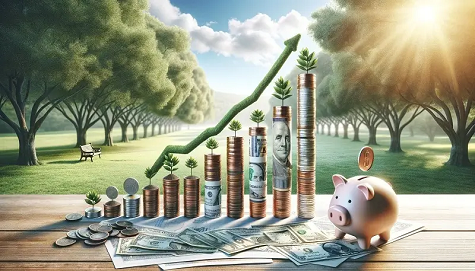Section 5-7: Daily Compounding
Section 5-7: Daily Compounding
Overview

 Daily compounding refers to the frequency at which interest is added to the principal balance of an investment or loan on a daily basis. With daily compounding, interest accrues daily based on the current principal balance and is added to the account or loan balance each day. This continuous compounding process allows for faster growth or accumulation of funds over time compared to less frequent compounding periods.
Daily compounding refers to the frequency at which interest is added to the principal balance of an investment or loan on a daily basis. With daily compounding, interest accrues daily based on the current principal balance and is added to the account or loan balance each day. This continuous compounding process allows for faster growth or accumulation of funds over time compared to less frequent compounding periods.
Here's how daily compounding works:
Principal Amount: The principal amount is the initial sum of money invested or borrowed.
Interest Rate: The interest rate is the annual percentage rate (APR) applied to the principal amount. For daily compounding, the annual interest rate is divided by the number of days in a year to determine the daily interest rate.
Compounding Period: With daily compounding, interest is added to the principal balance every day, resulting in continuous growth or accumulation of funds.
Calculation: To calculate the future value of an investment or loan with daily compounding, you can use the following formula:
A = P(1 + r/n)^(nt)
Where:
- A = the future value of the investment or loan, including compound interest
- P = the principal amount (initial investment or loan amount)
- r = the annual interest rate (as a decimal)
- n = the number of times interest is compounded per year (for daily compounding, n = 365)
- t = the time the money is invested or borrowed for, in years
Example: Let's say you invest $1,000 at an annual interest rate of 5%, compounded daily for 3 years. Using the compound interest formula:
A = $1,000(1 + 0.05/365)^(365*3)
In this example, the future value of the investment after 3 years, including compound interest with daily compounding, would be calculated using the formula above.
Daily compounding is commonly used in savings accounts, certificates of deposit (CDs), and certain types of loans. It allows for more frequent accrual of interest, resulting in faster growth of investments or higher interest costs for borrowers over time compared to less frequent compounding periods, such as annually or semi-annually.
Videos (Click on Image to View Videos)
Online Textbook Read Section 5-7: (Daily Compounding)
